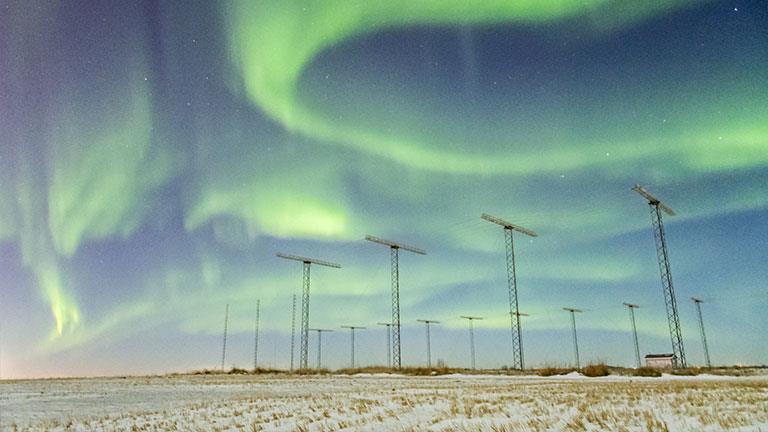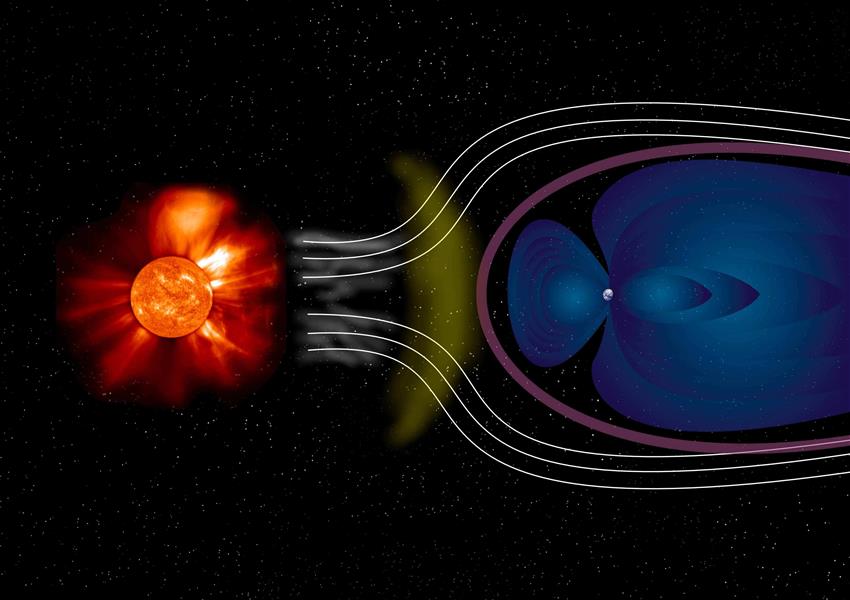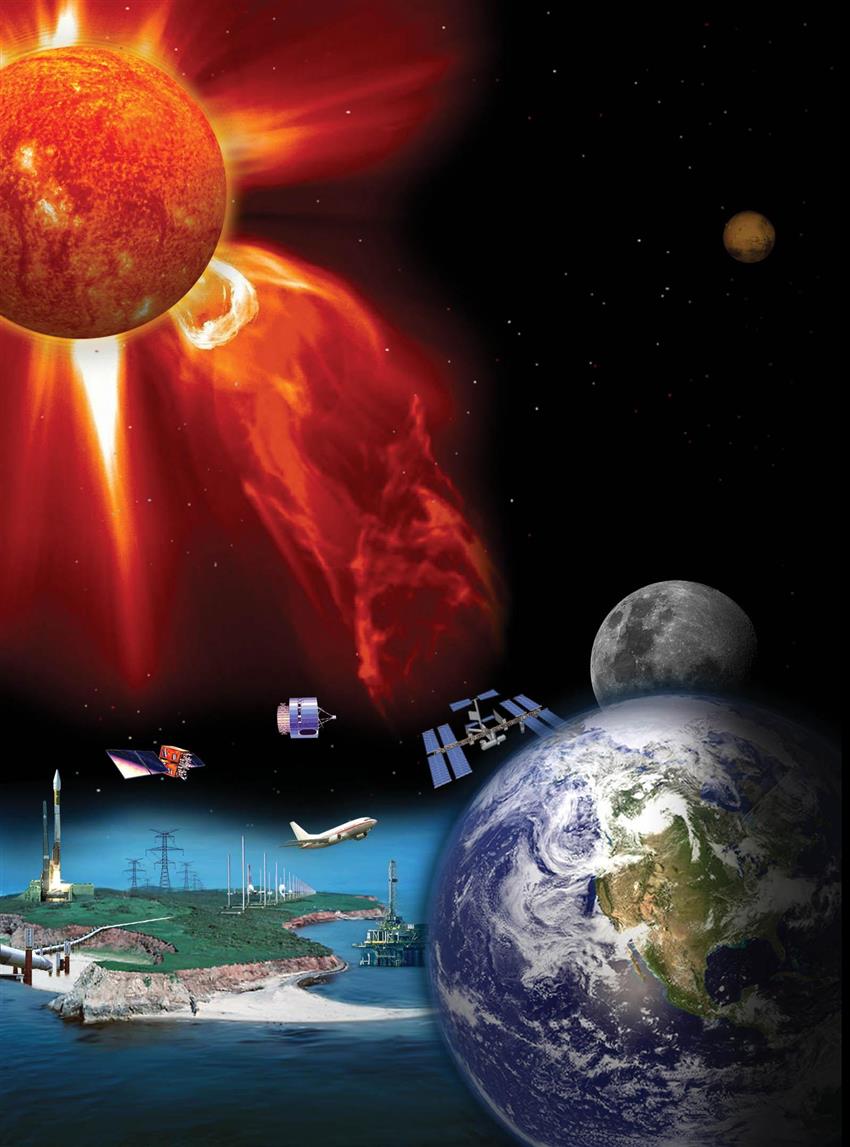Geospace Observatory (GO) Canada: Monitoring and predicting space weather
As our dependence on technology continues to grow, so does our need to monitor and forecast space weather. Space weather refers to the impact of radiation from space on astronauts, satellites, and systems on Earth. Space weather is known to have caused a blackout in the province of Quebec in , malfunctions of the Anik E1 and Anik E2 satellites in , and the loss of 40 Starlink satellites in . Because of its northern location, Canada is highly impacted by the effects of space weather, but this also gives Canada a front row seat to observe the near-Earth space environment (geospace) where space weather occurs.
The GO Canada initiative supports the academic community in gathering space weather data, which will enable scientific research, and lead to the development of applications of benefit to Canadians. Space weather is best observed by combining measurements from space and from the ground, by monitoring the magnetic disturbance it causes, the way it absorbs or deflects radio waves, or by observing its visual signature: the aurora.
Instruments collecting geospatial data
Following an Announcement of Opportunity issued in August 2022, two projects were selected. The contribution agreements totalling $6.5 million over six years support operation and data collection from scientific instruments that probe space above Canada, to better understand the impact of space weather on Canadian infrastructure. They also ensure the data is collected on a continual basis for open access by Canadian scientists and the public. Here is the list of the projects that were selected to receive a contribution agreement from the Canadian Space Agency.
SuperDARN Canada National Research Facility – University of Saskatchewan

The northern lights seen over the Saskatoon SuperDARN radar site. (Credit: Ashton Reimer)
The Super Dual Auroral Radar Network (SuperDARN) is a global network of scientific radars that monitor conditions in the near-Earth space environment. The radars allow researchers to observe how space weather conditions drive charged particle flows in Earth's ionosphere and magnetosphere. These changes are connected to disturbances in space and on Earth that affect critically important modern infrastructure, including satellites, power grids, pipelines, radio communications and space station radiation hazards. Canada's fundamental contribution to SuperDARN is the operation of the five SuperDARN Canada radars at Saskatoon, Prince George, Rankin Inlet, Inuvik, and Clyde River.
The SuperDARN data is available on the website of the University of Saskatchewan.
Project team
- Dr. Kathryn McWilliams, University of Saskatchewan (principal investigator)
- Kevin Krieger, University of Saskatchewan
- Fiona Haynes, University of Saskatchewan
SEC – Athabasca University, University of Alberta and University of Calgary

A wind of particles from the Sun called the solar wind strikes the blue funnel-shaped magnetosphere around Earth. (Credit: ESA)

Different instruments and members of the Space Environment Canada collaboration. (Credit: Space Environment Canada)
Space Environment Canada (SEC) is bringing together the geospace ground-based observing programs of Athabasca University, the University of Alberta and the University of Calgary. SEC includes several projects that were funded by the previous GO Canada program such as CARISMA from the University of Alberta, TREx-ASI from the University of Calgary and AUTUMN from Athabasca University.
This collaboration makes SEC a Canada-wide network composed of over ~100 ground-based instruments, including:
- Magnetometers: a tool used to measure the strength and intensity of magnetic fields.
- All-sky imagers: a specialized camera that takes pictures of the entire sky to study auroras.
- Riometers: a scientific instrument that measures the strength of radio signals coming from space to study the properties of the ionosphere.
- Spectrographs: a device that splits light into its individual colours and records their intensities, allowing to analyze the chemical composition of objects.
The combination of all those instruments makes SEC the world's foremost facility for remote sensing of a broad range of ionospheric properties and phenomena.
SEC will improve the understanding of the phenomena related to space weather that pose a risk to the reliable operation of essential infrastructure such as power grids and communication systems. It will also, by producing high-quality freely available data, provide support to the science objectives of Canadian and international space missions.
SEC data is open and freely available online.
Project team
- Dr. Eric Donovan, University of Calgary (leadership team)
- Dr. Martin Connors, Athabasca University (leadership team)
- Dr. Ian Mann, University of Alberta (leadership team)
- Dr. David Milling, University of Alberta (leadership team)
- Dr. Emma Spanswick, University of Calgary (leadership team)
- Dr. Vassilis Angelopoulos, University of California, Los Angeles
- Dr. Lauren Blum, University of Colorado Boulder
- Christine Gabrielse, Space Sciences Department, The Aerospace Corporation
- Dr. Richard Horne, British Antarctic Survey
- Dr. Allison Jaynes, University of Iowa
- Dr. David Knudsen, University of Calgary
- Dr. Bea Gallardo-Lacourt, NASA Goddard Space Flight Center
- Dr. Yoshizumi Miyoshi, Nagoya University
- Dr. Robert Rankin, University of Alberta
- Dr. Craig Rodger, University of Otago
- Dr. Kazuo Shiokawa, Nagoya University
Explore further
- Date modified:

